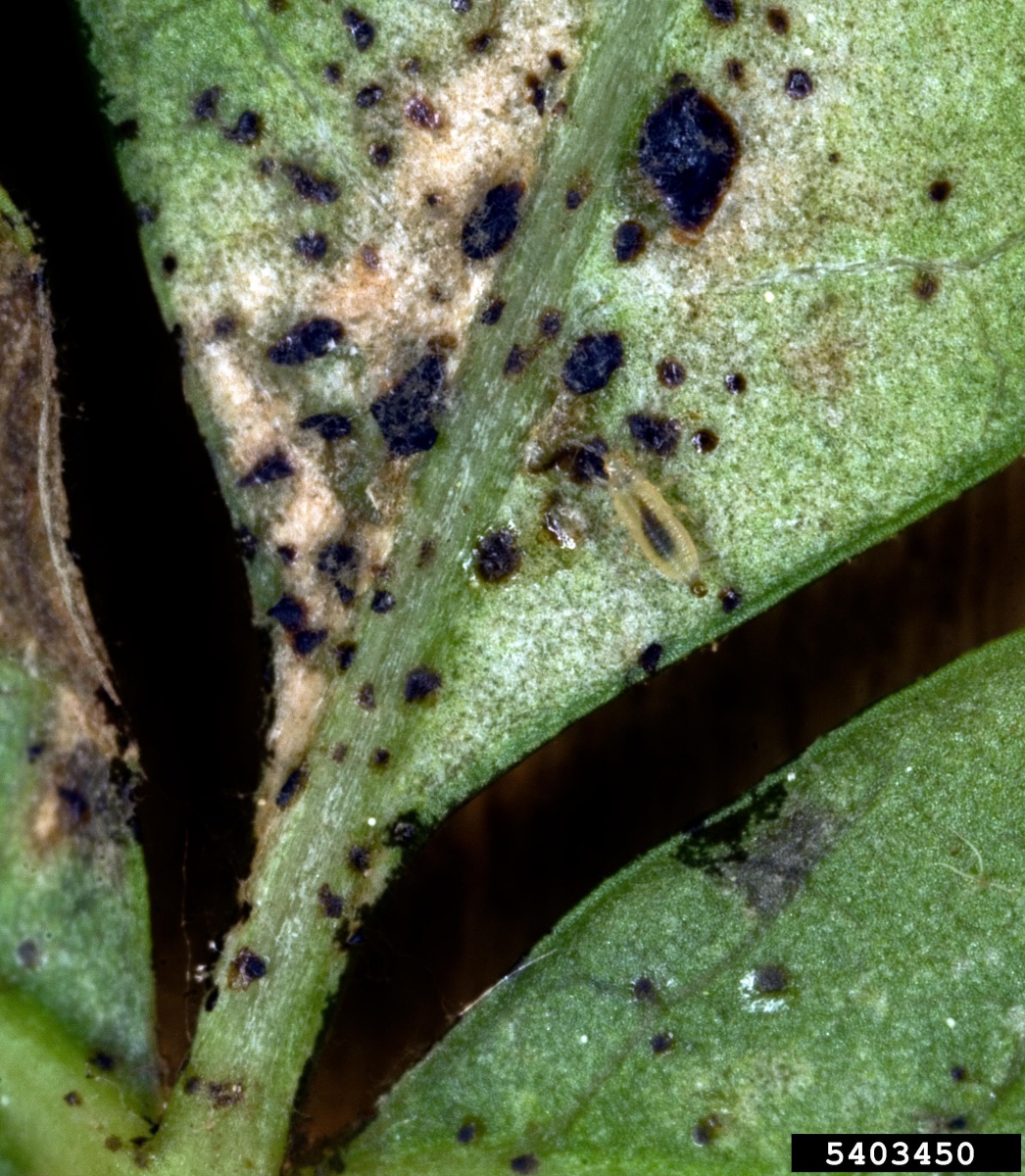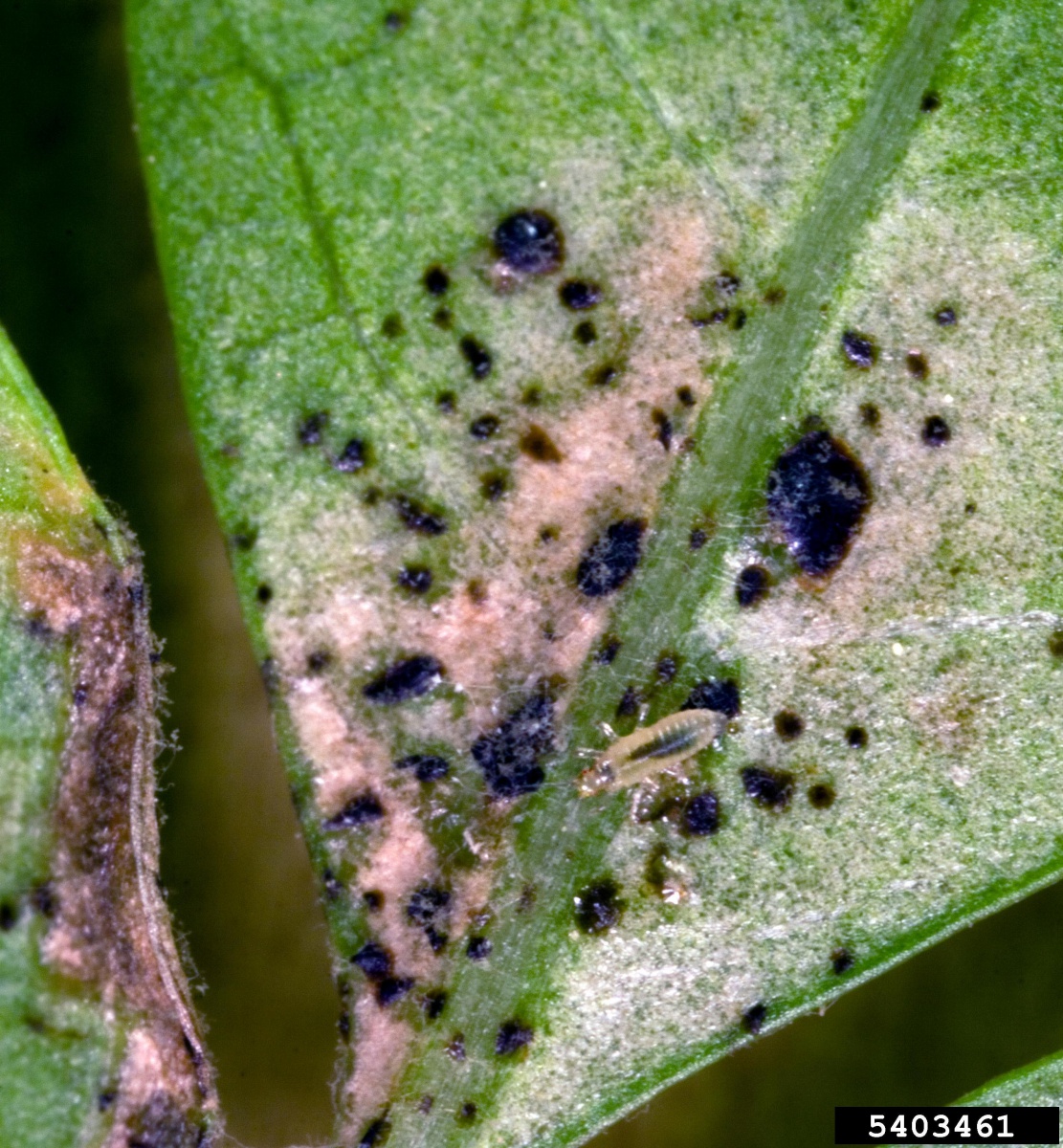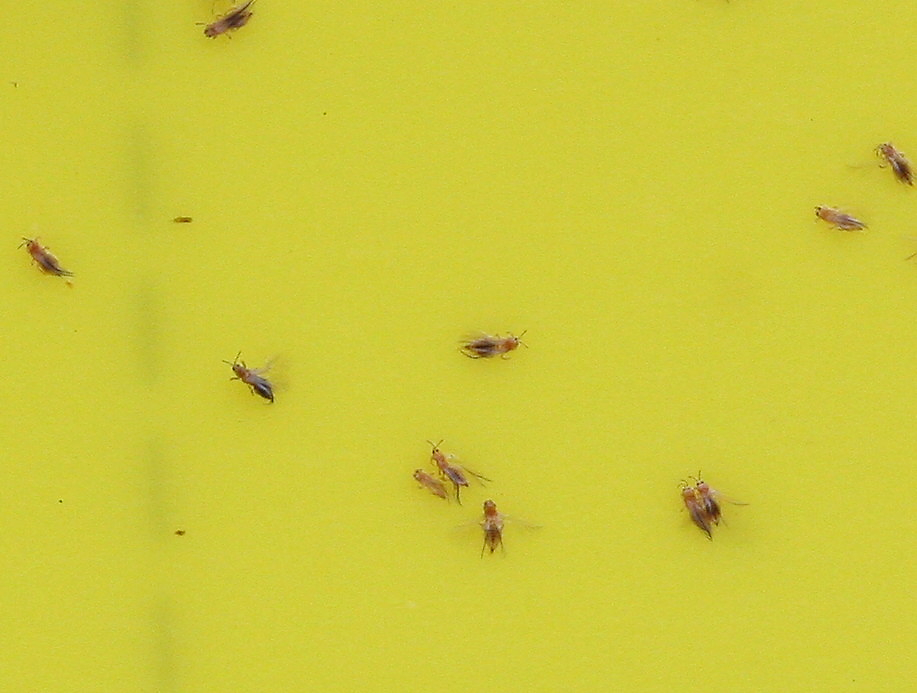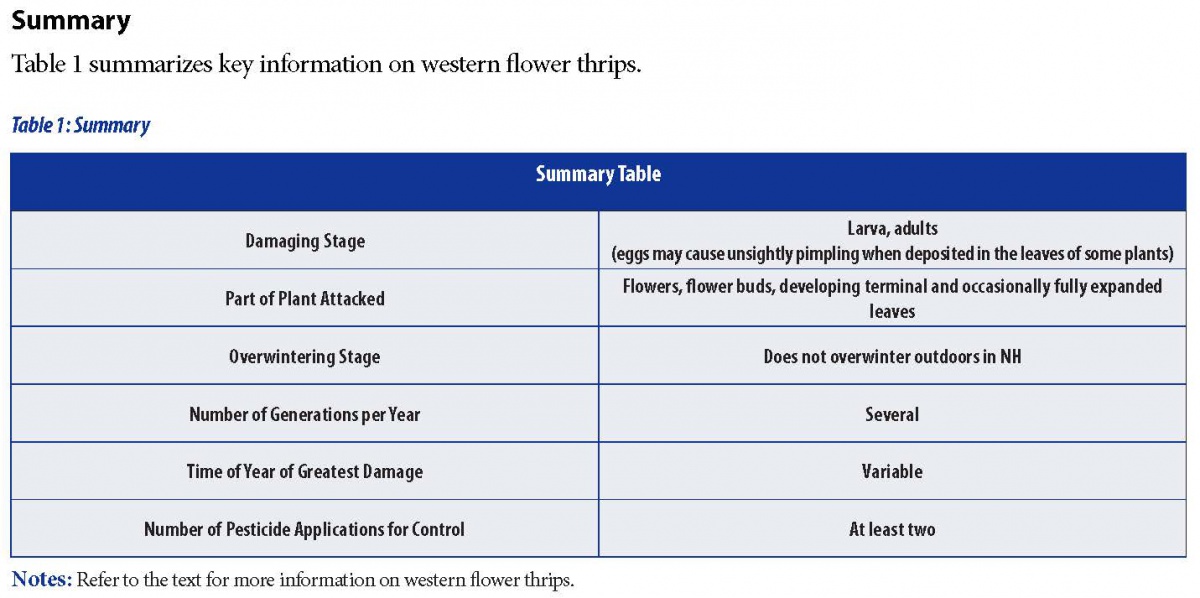The Western flower thrips, Frankliniella occidentalis, is a devastating pest of ornamentals and the major vector for tomato spotted wilt virus. This insect is difficult to control due to its wide range of hosts, ability to develop resistance to pesticides, and vector capabilities. The reduced aesthetic quality caused by the Western flower thrips and the tomato spotted wilt virus results in major economic loss for growers. There are other (usually less common) species of thrips in our greenhouses, including onion thrips (Thrips tabaci), chilli thrips (Scirtothrips dorsalis), banded greenhouse thrips (Hercinothrips femoralis), and greenhouse thrips (Heliothrips haemorrhoidalis).
Description and Life Cycle
Thrips are elongated, tiny insects. Adults are usually 1 to 2 mm (3/64 to 5/64") long (1.2 to 1.4mm [3/64 to 1/16"] long for western flower thrips). Under very high magnification, you can see their unusual wings, which have sparse, very long hairs. When not flying, the wings are folded along the insect’s back, so they are difficult to see. They have short, straight antennae, and two dark eyes. Western flower thrips are light yellowish to brown.
There are several developmental stages of the Western flower thrips. The length of each stage is greatly influenced by temperature. Under optimum temperature conditions (80 - 85F), the Western flower thrips can develop in less than ten days.
The adult female deposits its eggs in plant tissue. The eggs hatch within two to four and-a-half days. The Western flower thrips then go through two larval stages. The first instar larva is small and white and is a voracious eater. Within one to two days, it molts and continues to feed heavily as a second instar larva. Larvae are difficult to detect due to their size and location: they are found beneath developing terminal foliage or at the site of petal attachment. When they are ready to pupate, they relocate in the soil.

Cranshaw, Colorado State University, Bugwood.org.
The pupa also has two developmental stages. The first stage, or prepupa, is generally inactive unless disturbed. It has a soft body and short developing wing pads. The 2nd stage, the pupa, produces longer, more developed wings.


Bugwood.org.
Management
IPM Strategies:
- Cultural Practices - Before bringing plants in greenhouses, inspect them for Western flower thrips and tomato spotted wilt virus. Ensure that greenhouse weed control is thorough - weeds harbor Western flower thrips and tomato spotted wilt virus. Discard tomato spotted wilt virus infected plants. Try to eradicate the vectors (thrips), especially if they are carrying tomato spotted wilt virus; you may have to close your greenhouse.
- Biological Control - There are several options for biological control agents, each with its own set of limitations and merits. Two foliage-dwelling mites (Neoseiulus cucumeris and N. swirskii) are available, plus one soil dwelling mite (Stratiolaelaps scimitus). There is a predatory rove beetle (Dalotia coriaria). Orius bugs are generalist predators that might help. Insect killing nematodes are also available (for the soil-dwelling thrips stages). There is recent research on banker plants and guardian plants that may help as well. Biological control of thrips is relatively difficult, and success is more likely if the program is carefully planned.
- Monitoring - Use trap plants and yellow or blue sticky cards near the plants. Western flower thrips feeding scars are readily noticed and tomato spotted wilt virus forms brown lesions. Use sticky cards (blue is best) near plants and vents (1 - 3 per 1000 ft2) to monitor adults. Spray when there is an abrupt increase in Western flower thrips on cards and spray to keep thrips level at no more than five thrips per trap per week. You can improve the efficiency of scouting by using indicator plants. These are plants in bloom that are highly attractive to thrips (yellow marigolds for example). If nothing else is in bloom, scattering a few indicator plants, and scouting repeatedly there can be very effective.
- Chemical Control - You should treat the entire greenhouse, but do not expect great control. You should treat your plants at low Western flower thrips population levels. Be sure to treat at least twice, five days apart until thrips are under control. Once thrips are under control, treat at 7 - 10 day intervals. In order to delay insecticide resistance, use the same insecticide for 4 weeks, then switch insecticides (exception - fumigants).

Consult your county Agricultural Field Specialist for specific recommendations.
 Stop! Read the label on every pesticide container each time before using the material. Pesticides must be applied only as directed on the label to be in compliance with the law. All pesticides listed in this publication are contingent upon continued registration. Contact the Division of Pesticide Control at (603) 271-3550 to check registration status. Dispose of empty containers safely, according to New Hampshire regulations.
Stop! Read the label on every pesticide container each time before using the material. Pesticides must be applied only as directed on the label to be in compliance with the law. All pesticides listed in this publication are contingent upon continued registration. Contact the Division of Pesticide Control at (603) 271-3550 to check registration status. Dispose of empty containers safely, according to New Hampshire regulations.
Download the resource for the complete factsheet.
